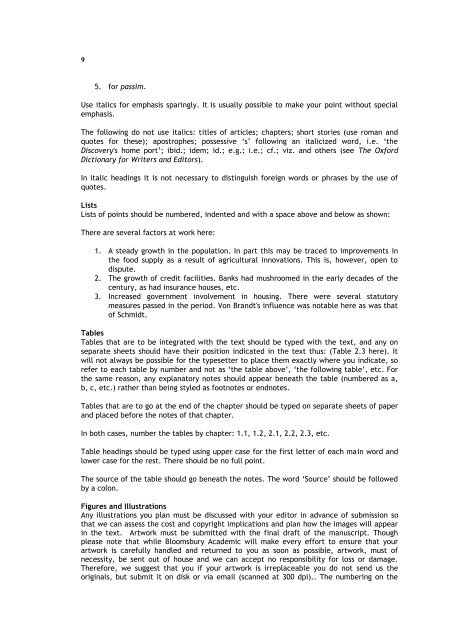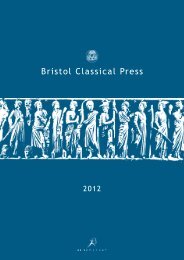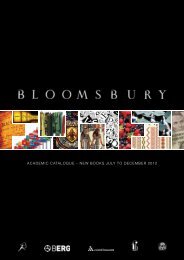Bloomsbury Academic | House Style Guidelines for Authors
Bloomsbury Academic | House Style Guidelines for Authors
Bloomsbury Academic | House Style Guidelines for Authors
Create successful ePaper yourself
Turn your PDF publications into a flip-book with our unique Google optimized e-Paper software.
95. <strong>for</strong> passim.Use italics <strong>for</strong> emphasis sparingly. It is usually possible to make your point without specialemphasis.The following do not use italics: titles of articles; chapters; short stories (use roman andquotes <strong>for</strong> these); apostrophes; possessive „s‟ following an italicized word, i.e. „theDiscovery's home port‟; ibid.; idem; id.; e.g.; i.e.; cf.; viz. and others (see The Ox<strong>for</strong>dDictionary <strong>for</strong> Writers and Editors).In italic headings it is not necessary to distinguish <strong>for</strong>eign words or phrases by the use ofquotes.ListsLists of points should be numbered, indented and with a space above and below as shown:There are several factors at work here:1. A steady growth in the population. In part this may be traced to improvements inthe food supply as a result of agricultural innovations. This is, however, open todispute.2. The growth of credit facilities. Banks had mushroomed in the early decades of thecentury, as had insurance houses, etc.3. Increased government involvement in housing. There were several statutorymeasures passed in the period. Von Brandt's influence was notable here as was thatof Schmidt.TablesTables that are to be integrated with the text should be typed with the text, and any onseparate sheets should have their position indicated in the text thus: (Table 2.3 here). Itwill not always be possible <strong>for</strong> the typesetter to place them exactly where you indicate, sorefer to each table by number and not as „the table above‟, „the following table‟, etc. Forthe same reason, any explanatory notes should appear beneath the table (numbered as a,b, c, etc.) rather than being styled as footnotes or endnotes.Tables that are to go at the end of the chapter should be typed on separate sheets of paperand placed be<strong>for</strong>e the notes of that chapter.In both cases, number the tables by chapter: 1.1, 1.2, 2.1, 2.2, 2.3, etc.Table headings should be typed using upper case <strong>for</strong> the first letter of each main word andlower case <strong>for</strong> the rest. There should be no full point.The source of the table should go beneath the notes. The word „Source‟ should be followedby a colon.Figures and IllustrationsAny illustrations you plan must be discussed with your editor in advance of submission sothat we can assess the cost and copyright implications and plan how the images will appearin the text. Artwork must be submitted with the final draft of the manuscript. Thoughplease note that while <strong>Bloomsbury</strong> <strong>Academic</strong> will make every ef<strong>for</strong>t to ensure that yourartwork is carefully handled and returned to you as soon as possible, artwork, must ofnecessity, be sent out of house and we can accept no responsibility <strong>for</strong> loss or damage.There<strong>for</strong>e, we suggest that you if your artwork is irreplaceable you do not send us theoriginals, but submit it on disk or via email (scanned at 300 dpi).. The numbering on the




